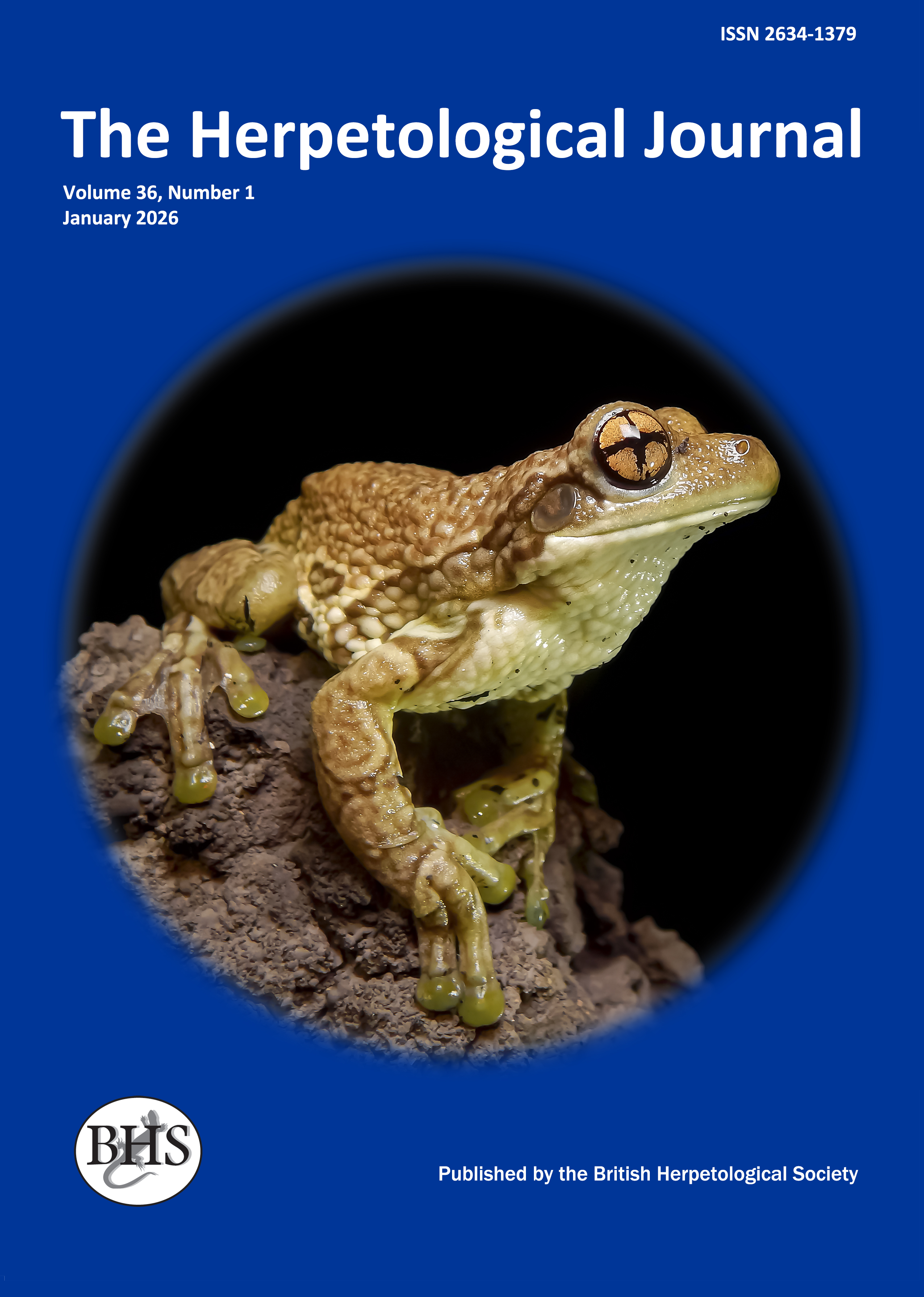
The Herpetological Journal
The Herpetological Journal is the Society's prestigious quarterly scientific journal. Articles are listed in Biological Abstracts, Current Awareness in Biological Sciences,Current Contents, Science Citation Index, and Zoological Record.
ISSN 0268-0130
2023 Impact Factor for the Herpetological Journal is 1.1, with the Journal sitting just below Quartile 2 in Zoology, at percentile 46.9
pdf 06. Small-scale geographic factors promote a high diversity of amphibians and reptiles in Colombia
17 downloads
Subscription / purchase required
DOI: https://doi.org/10.33256/34.4.244255
pp. 244-255
AUTHORS: Elson Meneses-Pelayo, Víctor Hugo Serrano Cardozo & Martha Patricia Ramírez-Pinilla
ABSTRACT: Analysing spatial biodiversity patterns in amphibians and reptiles is key to understanding the main drivers of community ecological structure, biogeography, and guiding conservation strategies. Our goal is to map patterns of taxonomic change and unravel the geographic and environmental factors driving species turnover among the biomes found in the Sogamoso river basin (SRB), which tributes to the inter-Andean middle Magdalena valley in Colombia, a hyperdiverse region at high-risk from human activities. The study area encompasses lowland forest, submontane, montane and high-elevation Andean habitats, with distinct biomes defined by elevation and physiographic characteristics. To do this, we compared species richness among different biomes and describe their variation along the altitudinal gradient. We collected data from literature and revision of specimens deposited in herpetological collections. Species distribution models were used to estimate geographic ranges and species composition was analysed among biomes using a presence/absence matrix. Generalised Dissimilarity Modelling (GDM) was employed to explore spatial turnover patterns of species composition. We observed that species richness of both amphibians and reptiles was the highest in the tropical humid forest biome and the lowest occurred mainly in the Sub-Andean semiarid vegetation. The spatial pattern of species turnover was the same for amphibians and reptiles and revealed an extreme similarity with the previous delimitation of the five biomes, which are supported by a combination of biotic, abiotic and anthropogenic factors. This study provides valuable baseline information for the conservation of amphibians and reptiles in the SRB and highlights the importance of considering geographic and environmental factors in understanding species distribution and turnover in the region.
Keywords: Sogamoso River, herpetofauna, richness patterns, turnover species, ecological structure

